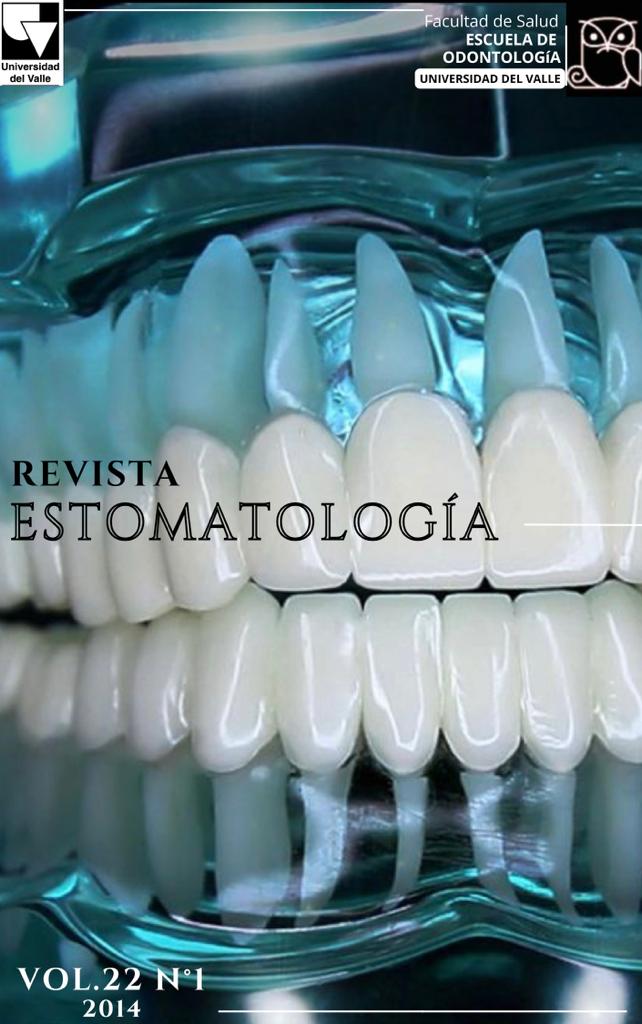Determining tartrate-resistant acid phosphatase in decalcified bone samples pig Sus domesticus
Main Article Content
Introduction: Nowadays, Immunohistochemistry are one of the most important techniques in the histopathological diagnosis. Despite of handling and processing cautions, both of them may generate changes in the protein structure, masking antigens, preventing antibody identification. Among different antigen retrieval methods proposed by the literature, the humid heat with Steamer has been widely accepted for its simplicity, control and low cost.
Objective: In this paper a protocol for humid heat antigen retrieval use in bone tissue samples that had been previously fixed in formaldehyde, decalcified with ethylenediaminetetraacetic (EDTA ), and embedded in paraffin is proposed.
Materials and methods: Samples of pig’s bone that had been prepared with conventional techniques, from the collection of the pathology laboratory of the University of Valle were used. New fixed process was performed in glutaraldehyde and a steamer was used to enhance antigen exposure. The anti-TRAP DEKOs ®, mouse monoclonal antibody was used as primary antibody, and the KIT UltraVision LP Large Volume Detection System HRP Polymer ® was used as a secondary antibody.
Results: In all samples exposed to primary antibody in 1:20 and 1:40 dilutions immunostaining mononuclear cells compatible with preosteoclasts were observed; immunostaining multinucleated giant cells consistent with osteoclasts were described.
Conclusions: Humid heat for antigenic recovery is a reliable method for the recovery of bone antigen samples fixed with formaldehyde.
- Immunohistochemistry
- antigenic recovery
- antibodies
- tartrate resistant acid phosphatase
- TRAP
2. IHC Staining Methods. Fifth Edition. 2009. Education Guide. DAKO3. Antigen Retrieval-Steamer Method(Citrate Buffer). http://www.ihcworld.com/smf/index.php?topic=155.0
4. Reynaga B, Zeni SN. Marcadores bioquímicos del remodelamiento óseo. Utilidad clínica. Acta Bioquím Clín Latinoam 2009; 43 (2):177-93.
5. Kaori S, Masaaki I, Senji O. Serum Levels of TRAP5b, a New Bone Resorption Marker Unaffected by Renal Dysfunction, as a Useful Marker of Cortical Bone Loss in Hemodialysis Patients. Calcif Tissue Int. 2008; 82: 278-87.
6. Masahiro S, Hiroshi T. Novel Osteoclast Signaling Mechanisms. Current Osteoporosis Reports 2007, 5:67-72.
7. Kalervo V, Zhao H, Mulari M, Halleen J. The cell biology of osteoclast function. Journal of Cell Science. 2000; 113:377-81.
8. Ezaki T. Antigen retrieval on formaldehydefixed paraffin sections: Its potential drawbacks and optimization for double immunostaining. Micron 2000; 31:639-49.
9. Baas IO, Van den Berg FM, Mulder JW, Clement MJ, Slebos RJ, Curran RC, Gregory J. The unmasking of antigen in paraffin sections of tissue by trypsin. Experientia 1977; 33:1400-01.
10. Cattoretti G, Pileri S, Parravicini C, Becker MHG, Poggi S, Bifulco Battifora, Kopinski M. The influence of protease digestion and duration of fixation on the immunostaining of keratins. A comparison of formalin and ethanol fixation. J. Histochem. Cytochem. 1986; 34: 1095-100.
11. Leong ASY, Gilham PN. The effects of progressive formaldehyde fixation on the preservation of tissue antigens. Pathology 1989; 21:266-8.
12. Abbondanzo SL, Allred DC, Lampkin S, Banks PM. Enhanc ement of immunoreactivity among lymphoid malignant neoplasms in paraffinembedded tissues by refixation in zinc sulfate-formalin. Arch. Pathol. Lab. Med 1991; 115:31-3.
13. Allison RT, Best T. p53, PCNA and Ki-67 expression in oral squamous cell carcinomas: the vagaries of fixation and mi c rowave enhanc ement of immunocytochemistry. J. Oral Pathol 1998; 27:434-40.
14. Key G, D’Amato L, Sabattini E, Feudale E, Reynolds F, Gerdes J, Rilke F. Antigen unmasking on formalin-fixed, paraffinembedded tissue sections. J. Pathol. 1993;171:83-98.
15. Kawai K, Umemura S, Tsutsumi Y. Antigen retrieval by heating treatment. Saibo (Cell) 1994; 26:152-7.
16. Kawai K, Serizawa A, Hamana T, Tsutsumi Y. Heat-induced antigen retrieval of proliferating cell nuclear antigen and p53 protein in formalin-fixed, paraffinembedded sections. Pathol. Int. 1994; 44: 759-64.
17. Hamilton SR, Offerhaus GJ. Potential false-positive results with antigen enhancement for immunohistochemistry of the p53 gene product in colorectal neoplasms. J. Pathol. 1996; 178:264-7.
18. Ezaki T. Antigen retrieval: its significance and drawbacks in immunohistochemistry. Kaibogaku Zasshi (Acta Anatomica Nipponica) 1996; 71:615-28.
19. Yamashita S. Heat-induced antigen retrieval: Mechanisms and application to histochemistry. Progress in Histochemistry and Cytochemistry 2007; 41:141-200.
Downloads
Los autores/as conservan los derechos de autor y ceden a la revista el derecho de la primera publicación, con el trabajo registrado con la licencia de atribución de Creative Commons, que permite a terceros utilizar lo publicado siempre que mencionen la autoría del trabajo y a la primera publicación en esta revista.





